Bhagyalakshmi M. Krishna
Women in percussion are so few that their gender alone makes them the cynosure of attention. Bengaluru-based Bhagyalakshmi M. Krishna, however, has gone beyond that, earning respect for her skills on the morsing, the identical adjectives used by her fellow artistes serving as testament. She has shared the stage with Mangalampalli Balamuralikrishna, Sudha Ragunathan, Sanjay Subrahmanyan and Dr. S. Sowmya besides many other noted musicians.
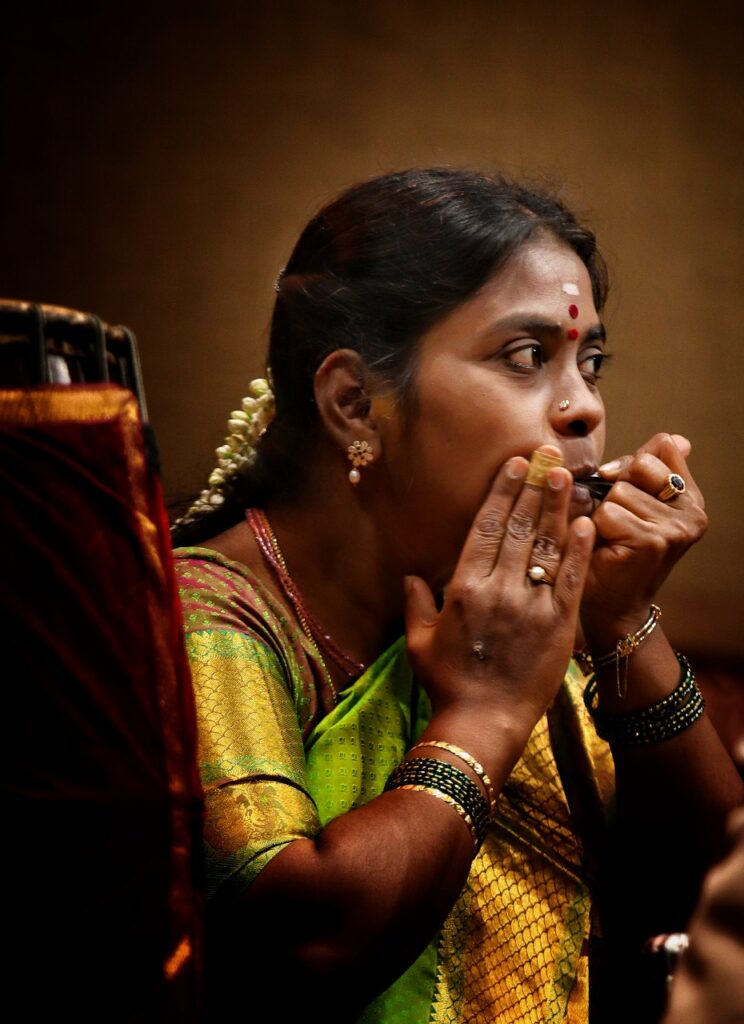
Senior ghatam exponent Sukanya Ramgopal says, “A thunderous round of applause is assured for Bhagyalakshmi’s solo. She attracts even lay people with her rhythmic patterns of different sounds and tonal qualities. I have seen the audience approaching her after every concert to convey appreciation and also clear their curiosity about the different sounds. A very nice lecture demonstration for them.” Vocalist Amrutha Venkatesh says, “Her cherubic stage presence, crisp playing and eagerness to make a concert succeed are some of her many qualities.”
A version of this article appeared in The Hindu. Photographs on YouTube video above courtesy Sri. Ramanathan Iyer and Sri. Rajappane Raju. Concert clipping on above video courtesy Smt. Bhagyalakshmi M. Krishna, as are photographs not individually credited.
Besides the Indira Sivasailam Special Award 2019, the Uma Award from Kartik Fine Arts 2019 and many others, AIR A-rated Bhagyalakshmi has been a constant at The Music Academy’s music season line-up since 2007, in the senior slot, where she has won multiple Best Upapakkavadyam Artiste Awards.
When she was 10, Bhagyalakshmi’s father, L. Bhimachar, the first artiste to play the morsing on the radio, initiated her into the instrument at the urging of his friend H.P. Ramachar (kanjira exponent). Ramachar conducted an all women percussion ensemble, Karnataka Mahila Laya Madhuri, which lacked a morsing player. Bhagyalakshmi, the youngest of four siblings, had, until then, not formally learned music, but had been steeped in it, nevertheless. “My father and second brother (B. Rajasekhar) played the morsing and my eldest brother (B. Dhruvaraj) played the mridangam. My mother would sing at home and they would play for her too.” Bhagyalakshmi initially learned just what was needed for the ensemble performances. “It was a few years later when I played at a veena concert that I realised how much more was needed to actually play for music.” She says playing for music is analogous to the practicals part of Science subjects. She would practice with her father every morning from 4.30 to 7.00 am. In the evening after school, she would practice again, this time with her brothers.
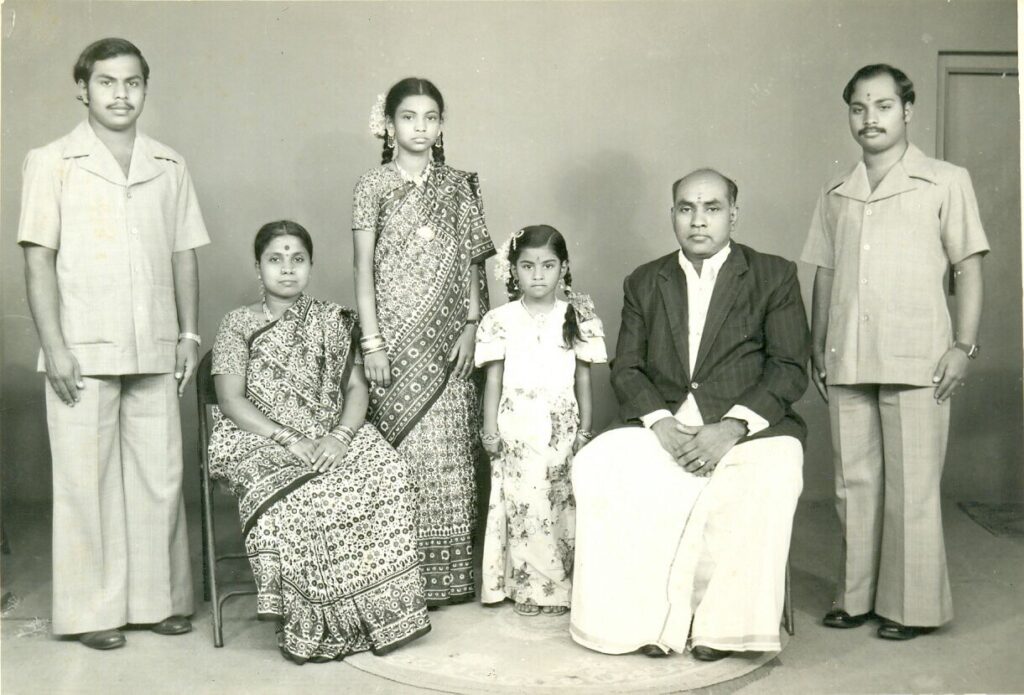
Employed far less frequently than the ghatam and the kanjira, the morsing is a unique instrument used percussively in traditional Carnatic concerts, ancillary to the mridangam. Known elsewhere as a Jew’s Harp (it is believed the term ‘morsing’ evolved from the Devanagari ‘mukar Sankh’ meaning ‘face conch’), it is employed as a melodic instrument in some other forms of music.
Bhimachar, besides learning mridangam and ghatam from H. Puttachar (father of Ramachar), had also learned vocal. However, his bread and butter came from a goldsmith’s shop that he operated. In between full days at the shop, Bhimachar would practice music whenever possible. At the shop, he discovered a morsing and, intrigued by it, explored how to produce percussive effects on this unique instrument. Bhagyalakshmi is frank and says that it was/is not possible to survive only on playing morsing – then or now.
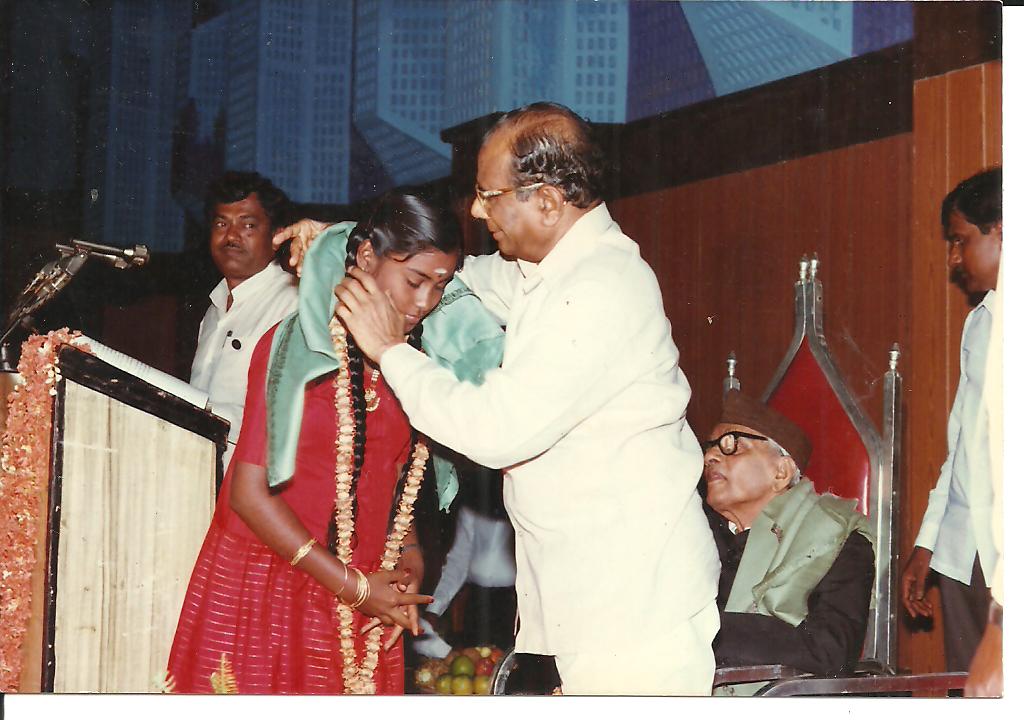
After her start in Ramachar’s ensemble, Bhagyalakshmi became a regular part of Sukanya Ramgopal’s Laya Tarang group. Bhagyalakshmi got married immediately after graduating with a Bachelor’s Degree in Science. Her new family was encouraging of her musical activities and she continued with Sukanya’s group as well as accompanying for other kutcheri-s. She is an integral part of the Morsing Tarang ensemble with her father, brothers, and son, which combines the melodic and percussive aspects of the instrument, showcasing the morsing in a unique manner.
Vocalist Amrutha Venkatesh narrates an instance of Bhagyalakshmi’s appeal. “The competent mridangam artiste did some very complicated and mind-boggling calculations in the tani Avartanam. Vidushi Bhagyalakshmi followed with an extremely sweet and aesthetic turn on the morsing. Everyone in the audience and on the stage could not help smiling and enjoying the melody of the instrument. It was the biggest and warmest round of applause in the concert that day. While she can handle the most complex and difficult calculations too with great ease but scores every single time with neat, apt and crisp playing.”
According to Bhagyalakshmi, the origins of the morsing can be traced back to Italy to almost 1,500 years ago. How it came to India is not clear – but it was seen in Rajasthan, Assam and parts of South India where it was initially used for bhajans. Around 1910, is when it was first seen in classical concerts, she says.
The morsing, made of metal, has a frame with a flexible ‘tongue’ at the centre. The frame is held between the teeth and sound is produced by plucking the tongue with the forefinger or middle finger, breathing out, vocalizing syllables in the throat and a combination of any of these that allow the tongue to vibrate. Bhagyalakshmi says, “When holding the instrument in the mouth, the pressure applied by the teeth must be just right such that there is a gap between the edges of the frame to allow the tongue room to vibrate. Then, keeping the tongue folded behind, one should recite the jati-s – the konakkol phrases of what one wants to reproduce – while plucking appropriately. The skill is in getting all these in precise proportions – the mouth should be opened but not too much, the tongue is involved but has to be folded back, the timing of the plucking and whether to pluck at all needs to be decided then and there too.”
The instrument itself has limitations, and getting good instruments is very difficult. Bhagyalakshmi says that among some 100 morsings, only 2-5 will be performance grade – the hardness of the metal, the duration of the ‘sustain’ of the sound etc., are aspects that morsing artistes look for in selection of an instrument. Since the morsing is made of metal, one would think the instrument is indestructible – not so, she says. For a single concert, Bhagyalakshmi carries 5-8 instruments in hand – the ‘tongue’ can easily get cracked. The thickness of the tongue is in inverse proportion to Sruti. When she and her family members have accumulated several ‘damaged’ instruments, it is mailed to Rajapalayam in Tamil Nadu where craftsmen fix them, often by replacing the cracked/cut tongue into the original steel frames.
Earlier, the morsings would rust, Bhagyalakshmi says, even though one would take pains to clean it after every concert and oil it as needed. So, Bhimachar hit upon the idea of getting the metal polished – this makes it last much longer sans corrosion.

As with other percussion instruments, the morsing too is tuned to the shadjam of the required Sruti. By application of a little wax on the plucking end, the Sruti can be lowered slightly – upto one full ‘kattai’ lower – the Sruti cannot be raised, however, she says. Adding of wax will lower the resonance of the instrument though. The pitch makes a difference in the ease or difficulty of playing the instrument – a high pitch reduces resonance, she says, requiring more vigorous plucking and harder and stronger vocalization of the jati-s (percussive syllables). The lips and the finger used to pluck the instrument can both get cut and bleed after a long duration of playing, which is why one will see sometimes see a finger bandaged. The range of Sruti-s between 2 and 5 is optimal to obtain the best effects on the morsing, she says.
To produce an appropriate effect that matches what the other percussionists are generating as well as the composition and its tempo, requires precise vocalization of the konnakOL syllables in the mouth, appropriate breathing, and perfect timing in plucking the instrument. “To get all these aspects to come together takes practice,” she says. Saying konakkOL is key for any accomplished morsing artiste. The question that arises is whether any vocalized syllables, as long as it is timed correctly, would work to produce the required effects. She explains that the exact syllable uttered, in conjunction with using the tongue in various ways produces different types of sound. For pallavi-s, she often just vocalizes the pallavi itself ensuring that the placement and timing of the syllables are accurate.

The general modus operandi in the percussion arena of Carnatic music is the mridangist initiating and other percussionists following that lead. Besides being the dominant percussion instrument, the mridangam, in comparison to the other commonly used percussion instruments, can be thought of as ‘ideal’ with its combination of significant physical playing surface, variety of tones and timbres. Often when morsing is part of a concert, there are two other percussionists on stage – a mridangam and a ghatam or kanjira. Bhagyalakshmi says she takes her cue from the mridangist. “Only if we go along with the jati-s they play will the overall concert be lifted. We cannot independently play whatever we feel. I usually follow what the others play.” Bhagyalakshmi says that while she has had the opportunity to independently play a couple of Avartanam-s here and there, she has not had the opportunity to lead the percussion in an appreciable manner.
As to whether the morsing is relatively easier to master in comparison to the mridangam, ghatam or kanjira, she replies in the affirmative. Since the speed of plucking is limited to allow for proper resonance, and there are only limited ways to produce sound, a morsing artiste’s main challenge is to improvise to create effects similar to those of traditional drums, and to do so instantly, such that an equivalent effect is produced. Every beat on a drum does not translate to a pluck on the instrument – some aspects cannot be played identically. The effect of gumkis for example, is produced with no plucking at all. She demonstrates some of these on the morsing which, while not exactly what the mridangist has produced, is melodious, seamless and in line with what just preceded it. A matter of satisfaction is her going from being known as ‘the female morsing player’ to someone invited to perform due to her skills on the instrument. She feels that there is nothing preventing women from taking up the morsing.
Prior to any concert engagements, Bhagyalakshmi will check out YouTube videos of the artistes. “Regardless of whether I have played with that artiste or not, I always do this. I will listen and also play alongside.” Whilst practicing, she will reflect on what junctures are appropriate for her to intercede and how best it would be to play such as to accent the program in the most suitable manner. The tani Avartanam is a tiny portion of one’s responsibility on stage, says Bhagyalakshmi, “The real skill and challenge is to play for the music.” Since eye contact with the artistes might not always be possible, she positions herself on stage such that she can see the tALam put by the vocalist and also the dominant hand of the mridangist.
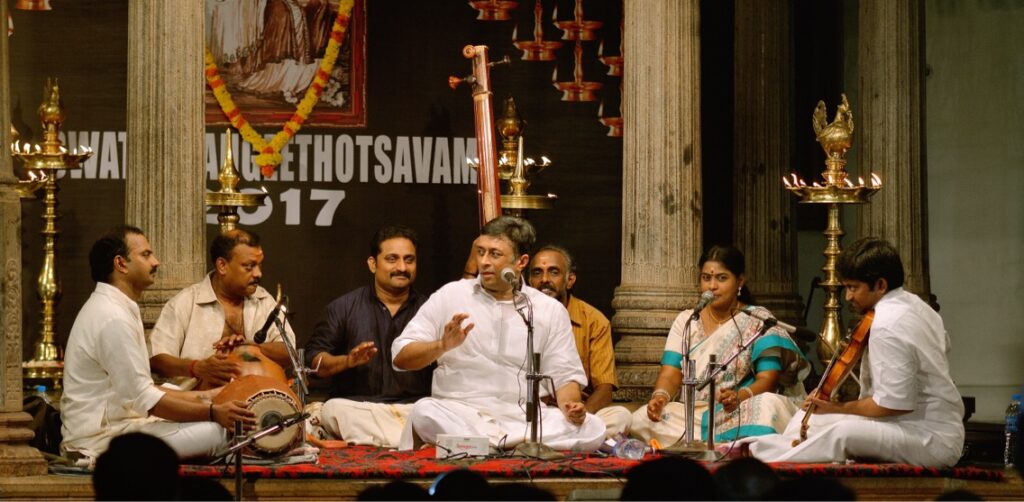
Other artistes are most appreciative of her commitment and dedication to a concert’s success. Amrutha says, “Every single time we have a concert, she will call several days earlier to see if I have planned any rare piece for the concert and also makes sure that she is familiar with most of the songs in the list. She is one of the few percussion artistes who takes the trouble to contact the mridangam artiste prior to the concert to find out their plan for the tani Avartanam for the main song or the Pallavi for that concert. She is every attentive and appreciative of even the rAga AlApana portion of the concert of the singer and the violinist. She never hesitates to convey her appreciation of other artistes on stage for their performances and is most gracious at accepting compliments as well.”
Senior mridangist H.S. Sudhindra says, “An ever-smiling lady who respects her seniors both on and off stage, she has a good sense of music. She is very sincere in preparing for concerts, understanding the sensitivities of the artistes on stage and avoiding unnecessary accompaniment. She calls me at least three days before the concert, reconfirms the Sruti, discusses the items in the concert and the planning of the tani Avartanam. She is a very dependable, dedicated artiste who is aesthetic in her playing and who does not resort to shortcuts. She works on new ideas with utmost dedication. She takes a special interest in RTPs making sure that she supports the overall performance.”
She has gone on several tours the world over to countries including Cyprus, Denmark, Sri Lanka, Switzerland, USA and many more. Bhagyalakshmi has also been an integral part of the morsing tarang ensemble created by her father where special compositions were made to showcase the morsing in previously unexplored dimensions. The family also participated and performed at the 5th International Jew’s Harp Festival held in Amsterdam in The Netherlands, in 2006 where, Bhagyalakshmi says, they had the opportunity to see the instrument deployed in the musics of different countries.
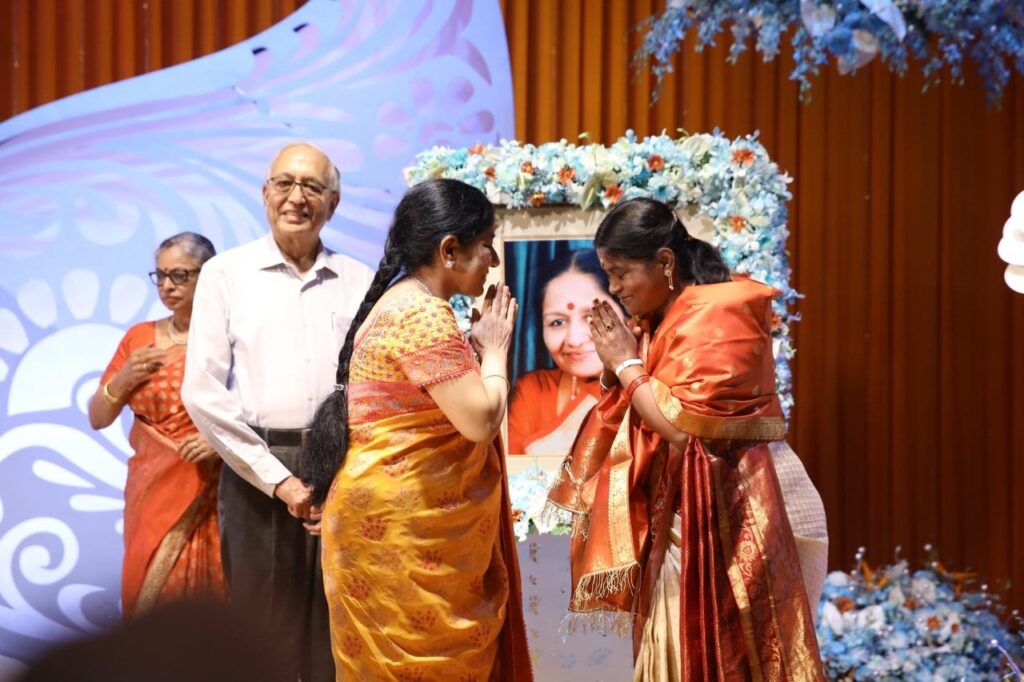
Bhagyalakshmi listens to a lot of music where she observes many facets – what has been sung and how, how the percussionists have accented etc. “Sometimes, I cannot decipher what the mridangist has played. On those occasions, I consult my brothers or my son who break it down into konnakkOL syllables for me.” Sukanya Ramgopal says, “I admire how Bhagyalakshmi plans for the concert especially for the tani Avartanam. When she is with me on stage, she keeps the tALam for me. She is always smiling and appreciates the artistes. When she accompanies, she is very confident. As a human being, she is very lovable, friendly and helpful. Be it an artiste, disciple or housewife, she handles each role very well.”
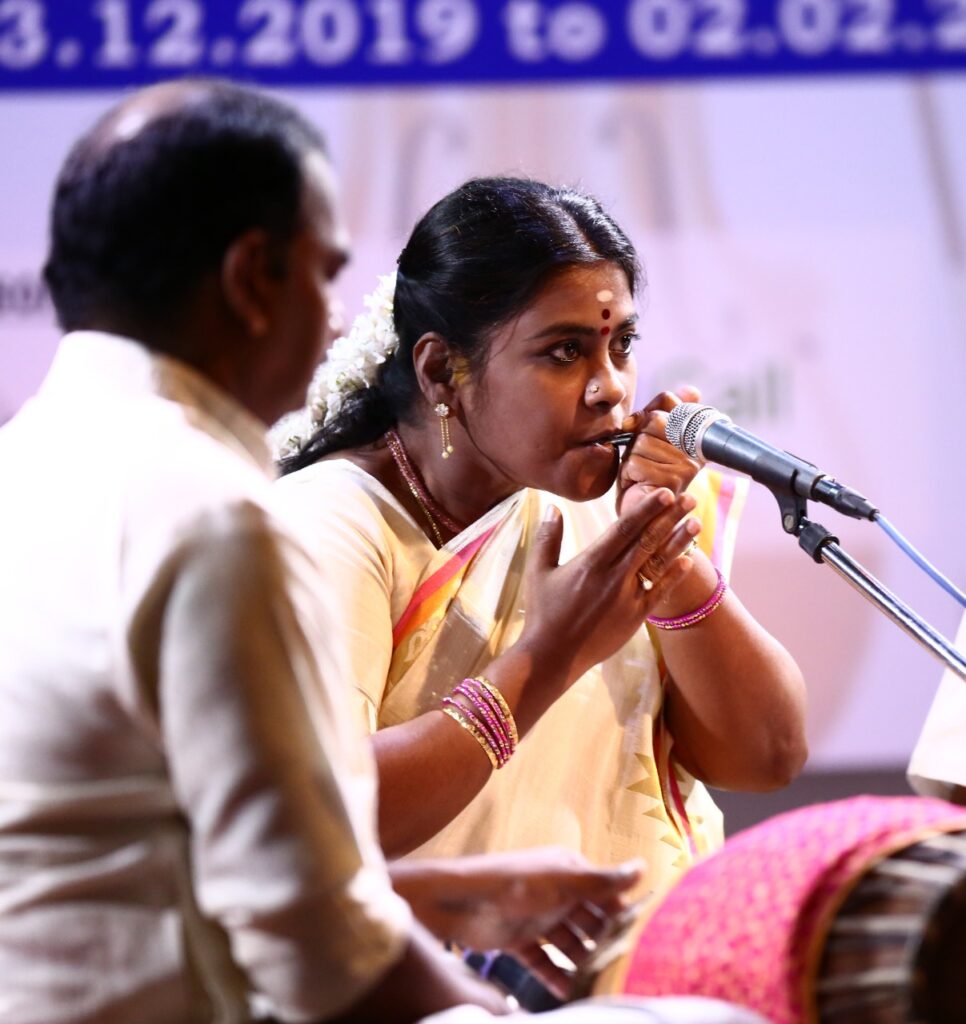
Do explore the lovely candid performance photography of Sri. Ramanathan Iyer’s at Ram Iyer’s Imaginarium and Sri. Rajapanne Raju’s here.
A delight to read. I’m so thrilled to see an accompanying artiste receive these accolades. Well done, Lakshmi. I listened to some of the youtube recordings as well.
Thank you, Kalpana.
Enjoyed the very descriptive and informative interview on morsings Vidya.
https://www.youtube.com/watch?v=4SpWuseQGys&ab_channel=TEDxTalks
had more information on the Jew’s harp. I hope Smt. Bhagyalakshmi will find it interesting.
Thank you!
Gita, this is a very informative video indeed! Also, makes one pay more attention to the various sounds one hears innocuously around us. Thank you very much for sharing!